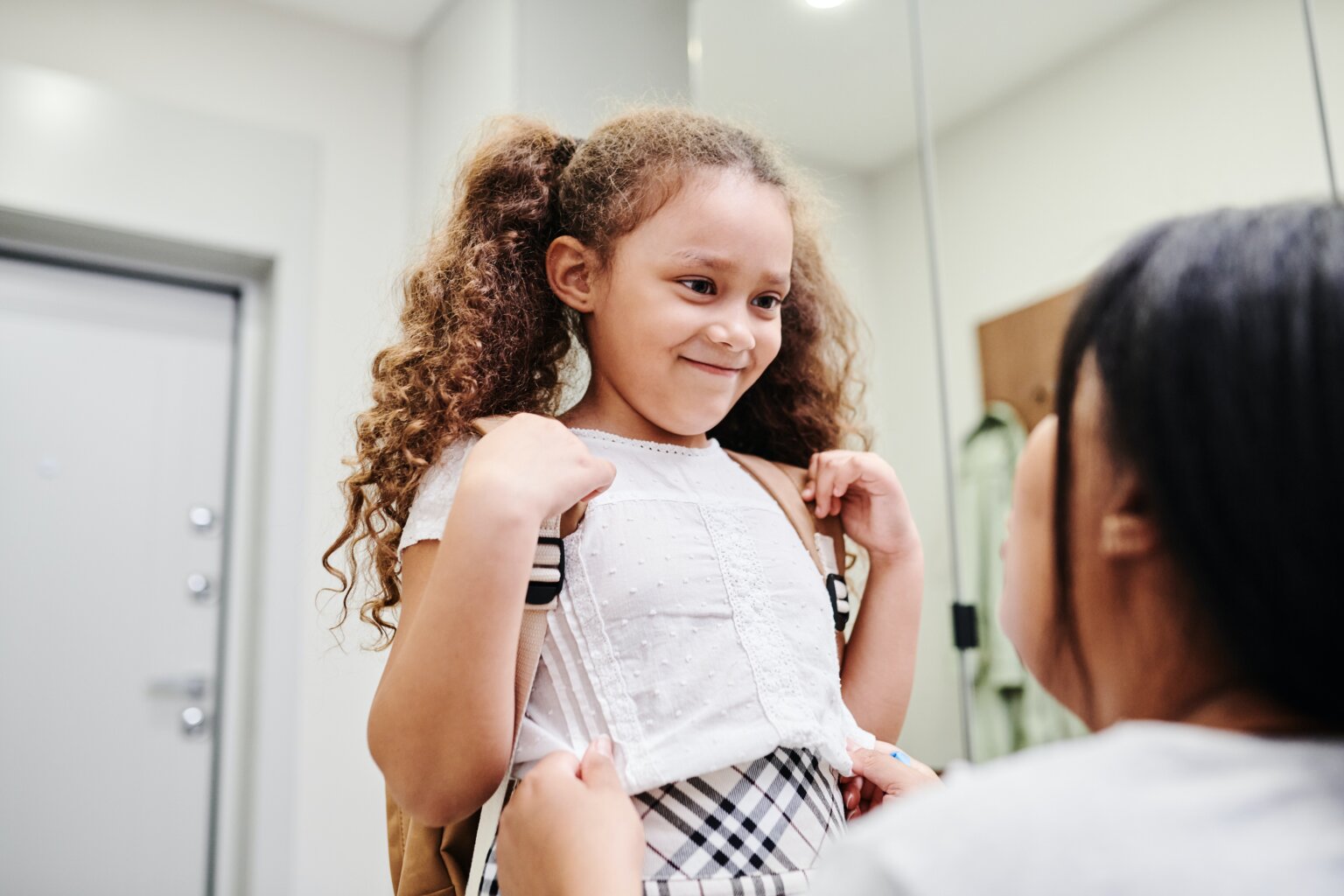
Coping with First-Day Jitters: Helping Your Child Adjust to the First Day of School
The first day of school is the number one culprit of giving kids butterflies. Help your kids fight the first-day jitters with these simple strategies.
Whether your kid is a baby bird just leaving the nest or a seasoned student starting a new year for the third time, some kids just get nervous on the first day of school. They say they hate school and don’t want to go. They cry and they scream and they beg you not to make them go.
As a parent, witnessing your child’s first-day jitters can pull at your heartstrings. All those tears may make you just as nervous and emotional. But with these practical strategies, you and your child will no longer need to struggle on the first day of school. When your child’s jitters leave you anxious, you can provide them with the support they need to conquer this milestone with confidence.
These eleven strategies will help your child ease those butterflies, step into the classroom with a brave heart, and embrace the adventure that awaits them on their first day of school.
Signs That Your Kid Is Nervous about the First Day of School
The words “I’m nervous” can have so many different meanings, especially for kids. Recognizing signs of nervousness in your child about the first day of school is the first step to providing the support they need.
These are some common indicators that your child might be feeling anxious:
- Changes in behavior: Your child might become more withdrawn, clingy, or irritable than usual. They might also show signs of restlessness or difficulty focusing.
- Trouble sleeping: Nervousness can lead to difficulty falling asleep or staying asleep. Your child might experience more nighttime awakenings or nightmares.
- Physical symptoms: Anxiety can manifest in physical symptoms, such as stomachaches, headaches, or nausea. Your child might complain of feeling unwell without an apparent cause.
- Avoidance behavior: Your child may try to avoid discussions about school or express reluctance to talk about the upcoming first day.
- Excessive questioning: They might repeatedly ask questions about what to expect on the first day, seeking reassurance or trying to alleviate their worries.
- Regression: Younger children might show regression in behavior, such as wanting to be held or comforted more frequently.
- Negative self-talk: Your child might make negative statements about themselves or their ability to handle the new situation.
- Tearfulness: They might become teary or cry more easily than usual, especially when thinking or talking about starting school.
- Physical tension: You might notice your child fidgeting, nail-biting, or exhibiting other signs of physical tension or nervous habits.
- Loss of appetite: Anxiety can sometimes cause a decrease in appetite or reluctance to eat.
Strategies to Cope with First-Day Jitters
Whatever nervousness your child is displaying, it’s important to address the root cause, not the behavior. According to the experts at the Child Mind Institute, it’s better to teach kids to deal with anxiety rather than to try to protect them from it. By acknowledging their feelings and addressing their concerns, you can help your child feel more confident and prepared for their first day of school.
These strategies will ease their transition into the new school year:
Create a Positive Mindset
Talk to your child about the exciting things they will experience at school. Highlight the new friends they might make, the interesting things they’ll learn, and the fun activities they’ll participate in.
Listen to Their Concerns
Let your child express their feelings and fears about starting school. Listen actively and validate their emotions. Reassure them that it’s normal to feel nervous, and that many other kids feel the same way.
Visit the School Beforehand
If possible, take your child to visit the school a few days before the first day. Familiarizing them with the school environment can help reduce anxiety.
Meet the Teacher
Introduce your child to their teacher before the school year starts. Knowing the teacher in advance can make them feel more comfortable on the first day.
Prepare Together
Involve your child in shopping and preparing for the first day of school. Let them pick out their backpack, school supplies, and outfit. This can give them a sense of control over the situation.
Establish a Routine
Start getting your child back into the school routine a week or so before the first day. This can include setting regular bedtime and wake-up times to ensure they are well-rested.
Share Your Experiences
Share your own positive school experiences and stories about your first day of school. This can help your child feel more connected and less alone in their feelings.
Role-Play
Practice different scenarios with your child, such as introducing themselves to new friends or asking the teacher for help. This can boost their confidence and reduce anxiety.
Read Books about Starting School
There are many children’s books that address the topic of starting school. One of our favorites is the picture book, My Name Is Cool, a celebration of biracial heritage and cultural identity. Reading these books together can help your child relate to the experiences of characters and understand that others have similar feelings.
Plan for a Smooth Drop-Off
On the first day, try to stay calm and positive during drop-off. Keep goodbyes short and sweet, and let them know you’ll be back to pick them up later.
Follow Up after School
When your child comes home, ask about their day and listen attentively. Celebrate the positive experiences and offer support if they encountered any challenges.
Books That Crush First-Day Jitters
- Calming Your Child
- Marvin’s Monster Diary 2 (+ Lyssa): ADHD Emotion Explosion
- Harriet’s Monster Diary: Awfully Anxious
- Middle School—Safety Goggles Advised
Shaelyn Topolovec earned a BA in editing and publishing from BYU, worked on several online publications, and joined the Familius family. Shae is currently an editor and copywriter who lives in California’s Central Valley.
